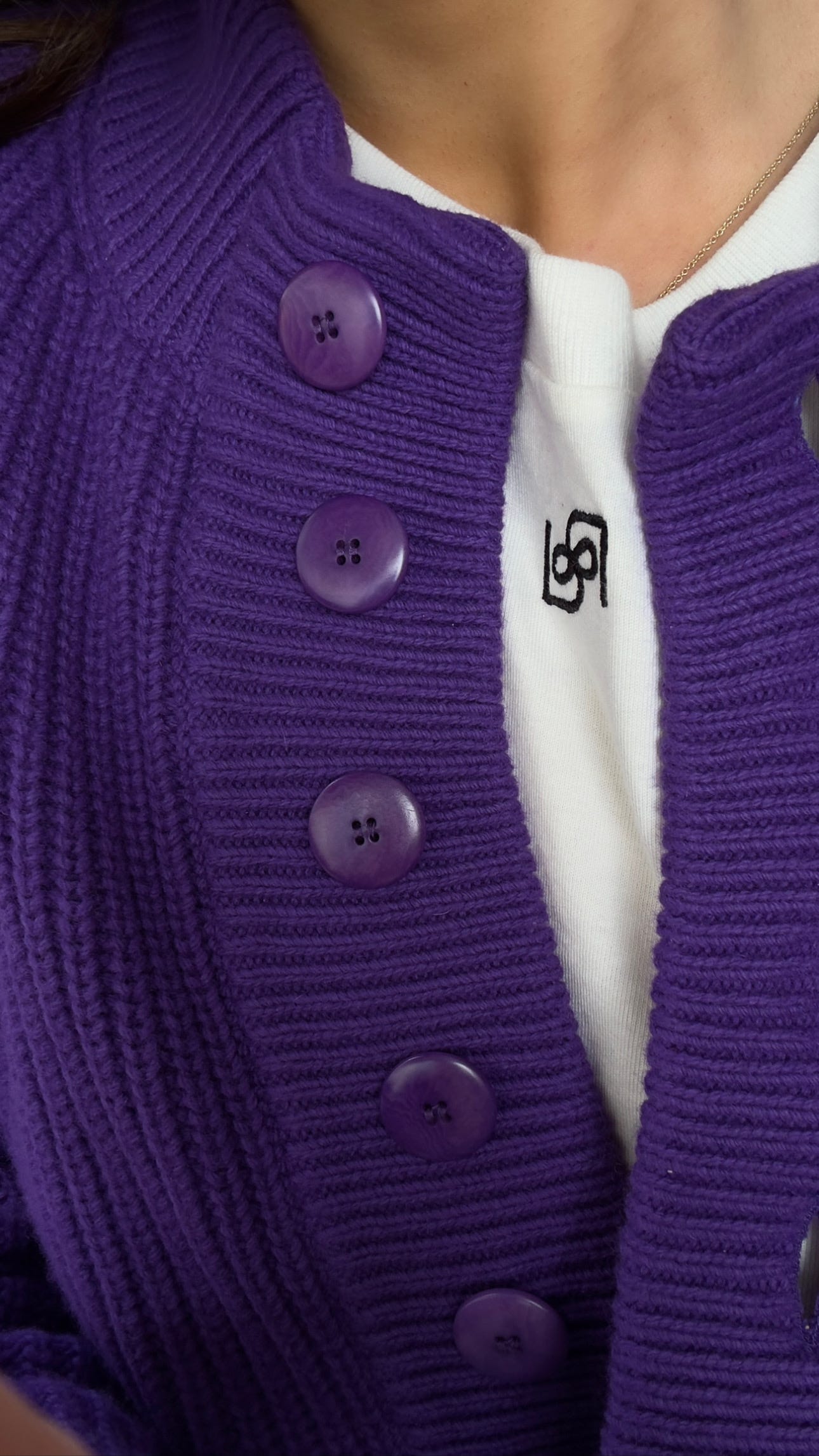I've always been one to fawn over jewel tones, yet I have never been particularly lured by swathing myself in their regal embrace. Surprisingly, I've recently found myself inexplicably drawn to accents of purple (anyone else?). The specific shade that has captured my attention is Tyrian Purple. While my favorite color is yellow—specifically, a soft buttercream yellow—this newfound interest in purple isn't a deep dive born from personal preference or affinity. I also have no intention of attempting to predict color trends or delve into any sort of forecasting, for that matter. However, something about Tyrian Purple tells me it's on the verge of becoming major… And you heard it here first.
It all started small for me, though—I invested in a Sézane Lucas Jumper in Ultra Violet a few years back, which sparked an ongoing obsession. But now, my compulsion has reached a new level (don't worry, this writing is my way of maintaining some impulse control). This is why this article is part wishlist and part historical exploration. So, as any self-deprecating fashion enthusiast would do, I decided to dig deeper and, unsurprisingly, uncovered Tyrian Purple's slimy, fishy, and somewhat questionable past (all puns intended here).
Tyrian Purple has been coveted, outlawed, revered, and displayed by the elite for centuries. Its very essence has a status symbol woven into it. Interestingly, it also carries personal significance tied to Holy Week in my motherland, Guatemala.
The pressing question has become: Am I making a tasteful, elegant, stylish choice? Or am I unwittingly stepping into a complex web of historical, religious, and cultural meanings? Both can be true, and I embody that contradiction. But it is not that deep at my core; I'll wear whatever color I fancy. By way of this post, I hope you feel motivated to do the same.
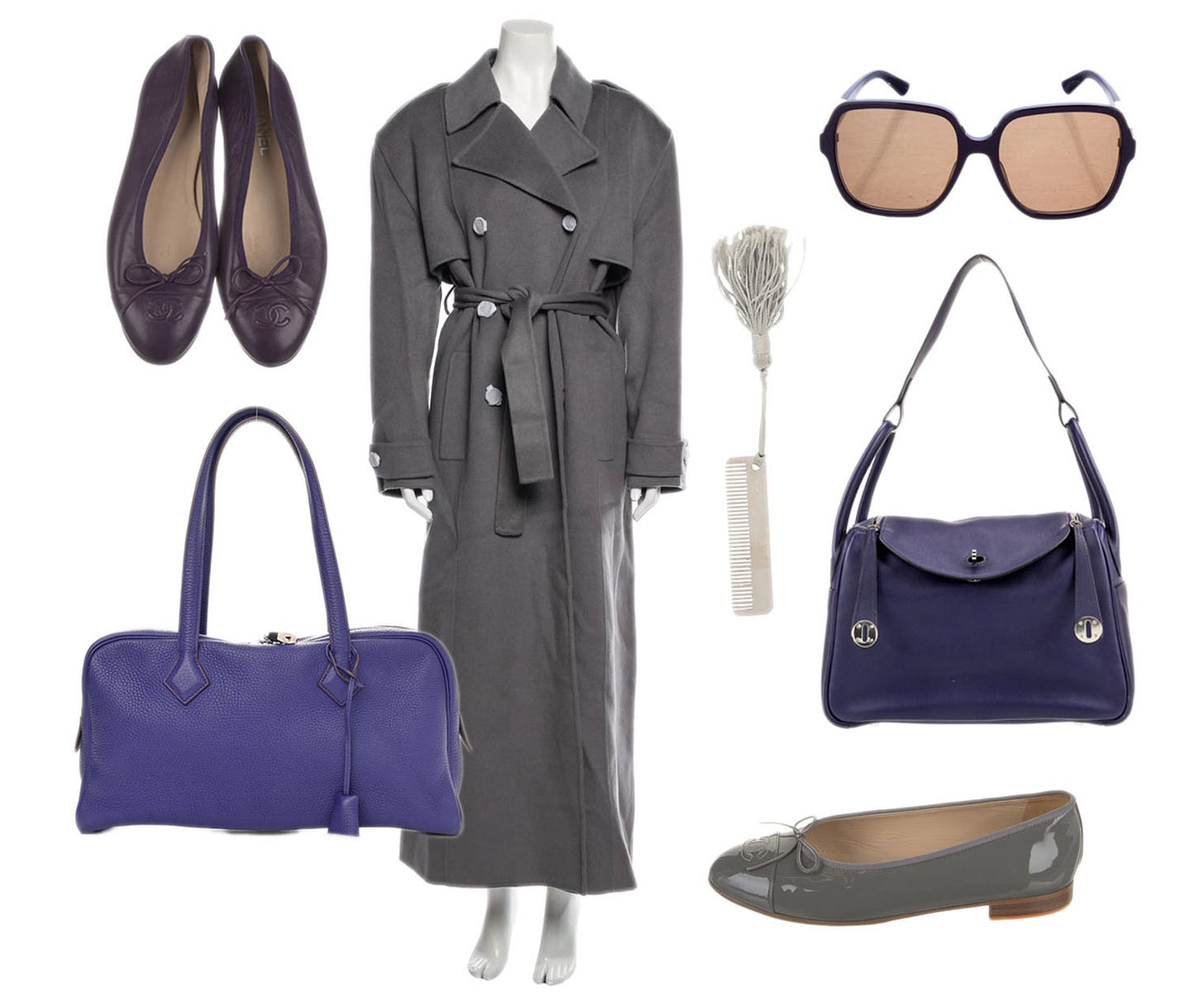
From left to right, top row: Chanel Interlocking CC Logo Leather Ballet Flats / The Frankie Shop Wool Trench Coat / Judith Leiber Silver Tone Solid Comb / Gucci Square Tinted Sunglasses. Bottom row: Hermès Taurillon Clemence Victoria Elan 38 Iris /Hermés Swift Verso Lindy 30 / Chanel Interlocking CC Logo Patent Leather Ballet Flats.
The Religious Purple Haze
In Guatemala, Semana Santa (Holy Week) is a deeply rooted tradition filled with elaborate processions, stunning carpets made of dyed sawdust, and a pervasive sense of reverence. Central to this celebration are the Cucuruchos—men cloaked in deep purple robes. This choice of color is far from random; historically, purple symbolized nobility, priesthood, and power. It represented suffering and sacrifice, making it a fitting visual for penance and deep religious fervor.
Tyrian Purple also carries an almost daunting exclusivity. At one point, retailers refused to sell purple items, believing them to be commercially cursed. Fashion has always treated this color cautiously, as if its deep-rooted significance positioned it as too heavy a load for consumer culture. Perhaps the weight of history makes purple so alluring—its ability to be both opulent and ominous, revered and rejected.
Beyond its folklore ties, purple has also been the color of grief. In Victorian times, mourners transitioning out of the deepest stages of loss would shift from black to shades of violet and heliotrope. This custom extended to children and young women, who often wore white for initial mourning and purple as they reentered society.
Yet, here I am, casually perusing the secondhand luxury market for a Hermès Victoria bag in Iris. Only fitting. I also blame Elizabeth Bennett for this fixation. She gets it. Exhibits A, B, and C are down below.
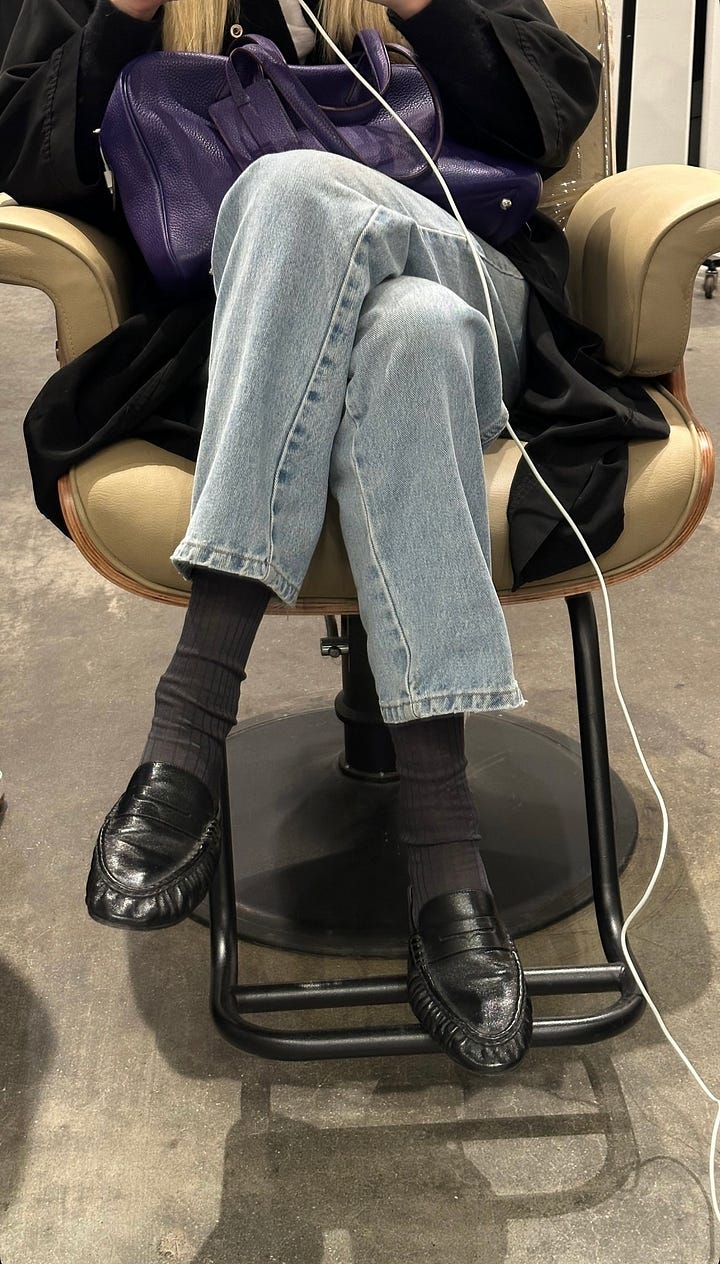
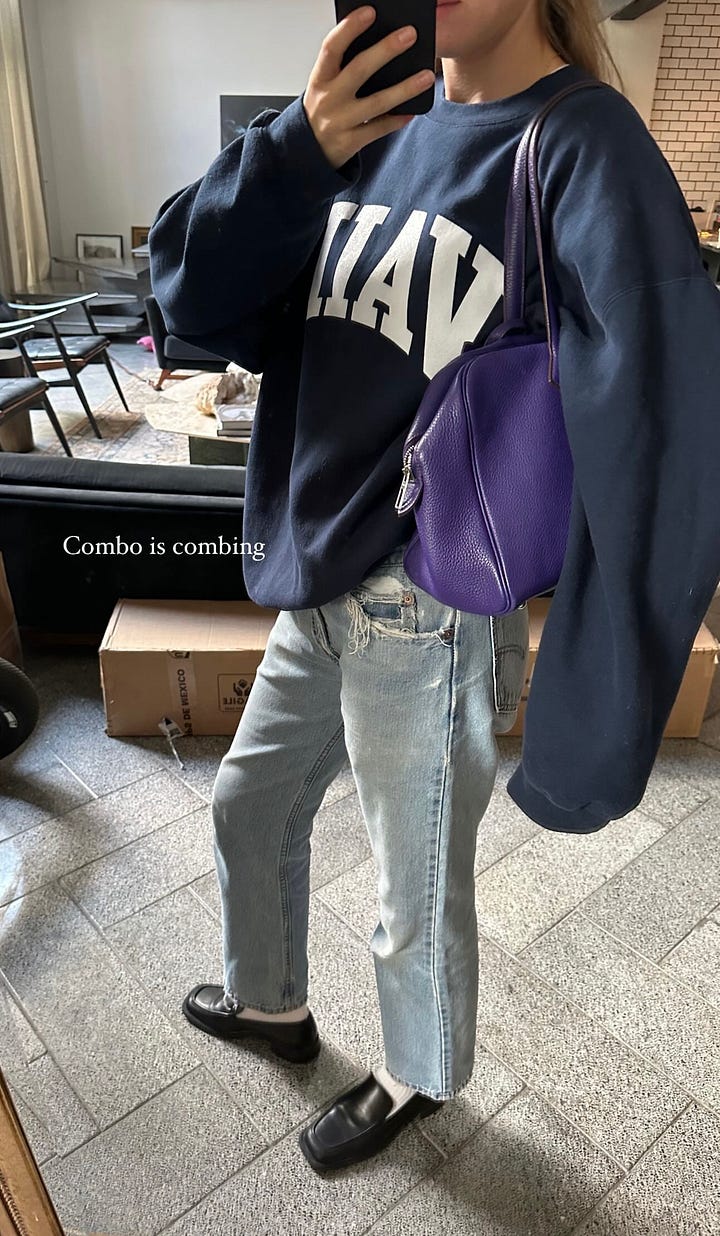
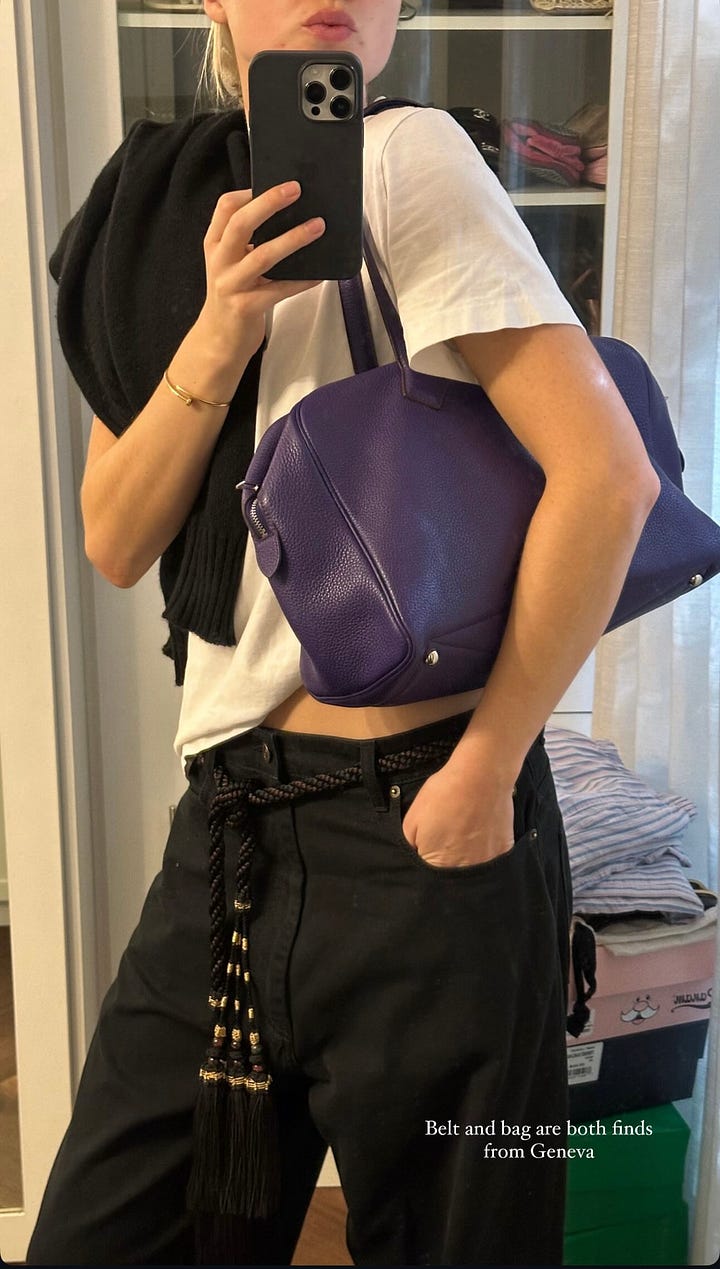

A Fishy Empire And A Slimy Mystery
Before Tyrian Purple became a badge of devotion and Catholic zeal, it held another identity: an ancient status symbol harvested from mollusks and hoarded by the privileged. While the beauty industry has recently embraced snail mucin as the new frontier in skincare, snails have long been linked to status and beauty—long before K-Beauty discovered their hydrating wonders.
Tyrian Purple, also known as Shellfish Purple, was the foundation of the Phoenician economy. Named after their city-state, Tyre (now part of Lebanon), their expertise in this rare dye earned them the nickname ‘The Purple People.’ Unlike lapis lazuli, which dazzles with celestial ultramarine hues, Tyrian Purple didn't originate as a beautiful gemstone. Instead, it was extracted from the hypobranchial gland of predatory murex sea snails (which, let’s not sugarcoat it, sits uncomfortably close to their rectum), Tyrian purple required an industrial-scale slaughter of these little sea dwellers just to dye a single garment.
The process was vile—thousands of snails were crushed, left to rot, and then slowly boiled in lead pots, producing a stench so unbearable that dye factories were exiled to the farthest reaches of civilization. Yet, despite its putrid origins, Tyrian purple became the ultimate symbol of power.
This purple dye wasn't just difficult to obtain—it was costly, and its durability was unmatched. While most dyes faded, Tyrian purple deepened with time as if basking in its own aristocratic self-importance. The pigment was so expensive that it was worth more than gold by the time of the Roman Empire. In 1st century CE Rome, a single pound of this prized dye would cost about half a soldier's annual salary, comparable to what one might pay for a diamond engagement ring today (in very broad brushstrokes.)
A Divine Accident: How a Hungry Dog and a Nymph Discovered the Color of Kings
Of course, no color this coveted could exist without a grand origin myth. Enter Heracles (or Hercules, for the Romans), whose canine companion supposedly gnawed on a murex snail along the Phoenician shore, leaving its mouth stained in a deep purple hue. When the nymph Tyros saw the purple-stained muzzle of Heracles’ dog and, unimpressed by standard mortal offerings, she declared she would accept nothing less than a gown in the same majestic shade. And thus, the discovery of Tyrian purple was immortalized, solidifying its place in both history and mythology.
A portrayal of the scene, depicted around 1636 by the 17th-Century Flemish master Peter Paul Rubens’ Hercules’ Dog Discovers Purple Dye, captures this moment with a touch of whimsy, depicting the muscular hero patting his colorfully incriminated pup. Of course, Rubens took artistic liberties—the snail in question resembles a nautilus rather than a prickly murex, and the whole scene is suspiciously idyllic for an event that involved crushing shellfish en masse. But historical accuracy aside, the message is clear: purple was not merely a color—it was a status, a privilege, occasionally a loaded statement, and a… death sentence. In ancient Greece and Rome, the right to drape oneself in Tyrian purple was strictly policed, with social rank determining just how much snail-derived rectal mucus one could flaunt. King Ptolemy of Mauretania learned this the hard way when he dared to wear a little too much in front of Emperor Caligula, who took it as a threat and promptly had him executed. From this, it’s easy to deduct how fashion truly has endured as a blood sport. It couldn’t ring more true today.
Tyrian purple once required centuries of labor and a plethora of snails to adorn emperors and the elite. But in a twist of fate, 1856 brought us a game-changer: British chemist William Perkin accidentally invented synthetic purple dye while searching for a malaria cure. What was originally dubbed Tyrian purple quickly became mauve, letting the masses snag the color of power without the snail guts.
Given its less-than-glamorous origins, eye-watering stench, and unsettling resemblance to coagulated blood, it’s almost absurd that purple became the hue of divine and imperial power. And yet, the deeper the shade, the steeper the price—because nothing says status like draping yourself in the color of both rotting shellfish and fresh carnage. Today, purple has shed some of its regal baggage, though it still carries a charmingly dark legacy—luxury mingling with grime.
Luckily for the rest of us, no snails were harmed in the making of my Hermès wishlist, and hey, a win is a win. I’m wrapping up the winter season draped in my own combinations of purple and grey. Expect more iterations in this space. See you next week!





